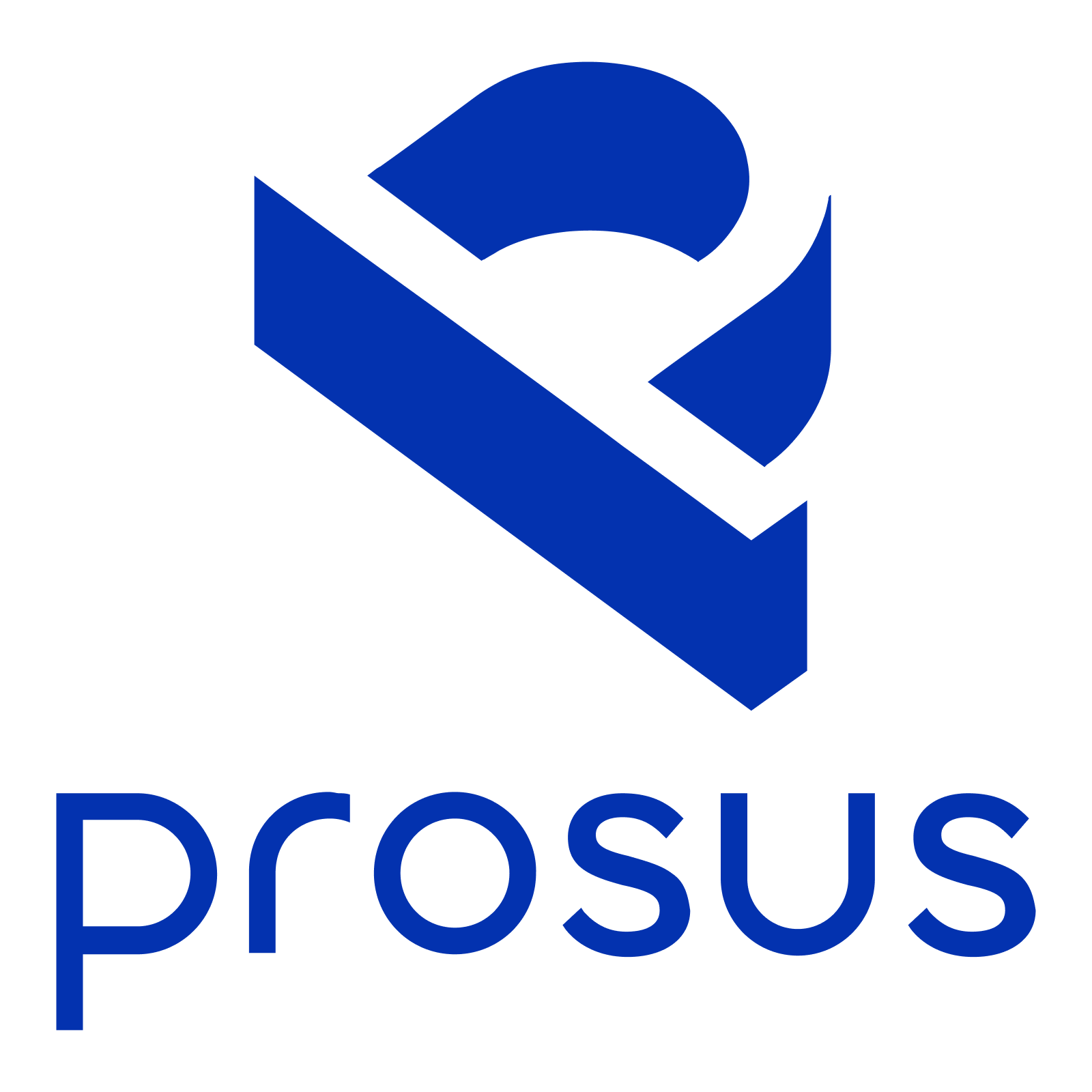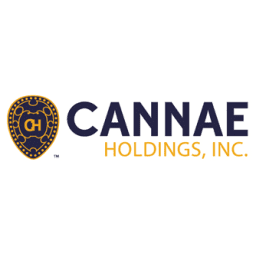
PepsiCo Inc
NASDAQ:PEP


| US |

|
Johnson & Johnson
NYSE:JNJ
|
Pharmaceuticals
|
| US |

|
Berkshire Hathaway Inc
NYSE:BRK.A
|
Financial Services
|
| US |

|
Bank of America Corp
NYSE:BAC
|
Banking
|
| US |

|
Mastercard Inc
NYSE:MA
|
Technology
|
| US |

|
UnitedHealth Group Inc
NYSE:UNH
|
Health Care
|
| US |

|
Exxon Mobil Corp
NYSE:XOM
|
Energy
|
| US |

|
Pfizer Inc
NYSE:PFE
|
Pharmaceuticals
|
| US |

|
Palantir Technologies Inc
NYSE:PLTR
|
Technology
|
| US |

|
Nike Inc
NYSE:NKE
|
Textiles, Apparel & Luxury Goods
|
| US |

|
Visa Inc
NYSE:V
|
Technology
|
| CN |

|
Alibaba Group Holding Ltd
NYSE:BABA
|
Retail
|
| US |

|
JPMorgan Chase & Co
NYSE:JPM
|
Banking
|
| US |

|
Coca-Cola Co
NYSE:KO
|
Beverages
|
| US |

|
Walmart Inc
NYSE:WMT
|
Retail
|
| US |

|
Verizon Communications Inc
NYSE:VZ
|
Telecommunication
|
| US |

|
Chevron Corp
NYSE:CVX
|
Energy
|
Utilize notes to systematically review your investment decisions. By reflecting on past outcomes, you can discern effective strategies and identify those that underperformed. This continuous feedback loop enables you to adapt and refine your approach, optimizing for future success.
Each note serves as a learning point, offering insights into your decision-making processes. Over time, you'll accumulate a personalized database of knowledge, enhancing your ability to make informed decisions quickly and effectively.
With a comprehensive record of your investment history at your fingertips, you can compare current opportunities against past experiences. This not only bolsters your confidence but also ensures that each decision is grounded in a well-documented rationale.
Do you really want to delete this note?
This action cannot be undone.

| 52 Week Range |
128.02
159.84
|
| Price Target |
|
We'll email you a reminder when the closing price reaches USD.
Choose the stock you wish to monitor with a price alert.

|
Johnson & Johnson
NYSE:JNJ
|
US |

|
Berkshire Hathaway Inc
NYSE:BRK.A
|
US |

|
Bank of America Corp
NYSE:BAC
|
US |

|
Mastercard Inc
NYSE:MA
|
US |

|
UnitedHealth Group Inc
NYSE:UNH
|
US |

|
Exxon Mobil Corp
NYSE:XOM
|
US |

|
Pfizer Inc
NYSE:PFE
|
US |

|
Palantir Technologies Inc
NYSE:PLTR
|
US |

|
Nike Inc
NYSE:NKE
|
US |

|
Visa Inc
NYSE:V
|
US |

|
Alibaba Group Holding Ltd
NYSE:BABA
|
CN |

|
JPMorgan Chase & Co
NYSE:JPM
|
US |

|
Coca-Cola Co
NYSE:KO
|
US |

|
Walmart Inc
NYSE:WMT
|
US |

|
Verizon Communications Inc
NYSE:VZ
|
US |

|
Chevron Corp
NYSE:CVX
|
US |
This alert will be permanently deleted.
PepsiCo Inc





PepsiCo Inc., with its roots tracing back to the late 19th century when Caleb Bradham invented Pepsi-Cola, has evolved into a multinational powerhouse known for its diverse range of beverages and snacks. This American giant operates through several well-defined segments, primarily Beverages, Frito-Lay North America, Quaker Foods North America, Latin America, Europe, Africa, the Middle East, and Asia Pacific divisions. Each of these segments plays a crucial role in shaping the company's global footprint. The beverage division, housing iconic brands like Pepsi, Mountain Dew, and Tropicana, remains a cornerstone of their business model. Meanwhile, the famed Frito-Lay snacks, with cultural staples such as Lay's, Doritos, and Cheetos, contribute significantly to the company's revenue streams, capturing markets worldwide with their wide appeal.
Diving deeper into its operations, PepsiCo's strategy isn't merely about selling products—it's about commanding a vast distribution network and innovating in response to shifting consumer demands. The company invests heavily in marketing and research and development, ensuring its portfolio resonates with the evolving tastes and preferences of consumers, including a rising interest in healthier options. Simultaneously, PepsiCo's direct store delivery model, alongside partnerships with bottlers and distributors, optimizes logistics and market penetration. From leveraging advanced analytics for precision marketing to pursuing sustainability initiatives in sourcing and packaging, PepsiCo's methods are as dynamic as its products. This adaptability ensures it can effectively monetize its diverse product offerings across the globe, reinforcing its position as a significant player in the global food and beverage industry.

PepsiCo Inc., with its roots tracing back to the late 19th century when Caleb Bradham invented Pepsi-Cola, has evolved into a multinational powerhouse known for its diverse range of beverages and snacks. This American giant operates through several well-defined segments, primarily Beverages, Frito-Lay North America, Quaker Foods North America, Latin America, Europe, Africa, the Middle East, and Asia Pacific divisions. Each of these segments plays a crucial role in shaping the company's global footprint. The beverage division, housing iconic brands like Pepsi, Mountain Dew, and Tropicana, remains a cornerstone of their business model. Meanwhile, the famed Frito-Lay snacks, with cultural staples such as Lay's, Doritos, and Cheetos, contribute significantly to the company's revenue streams, capturing markets worldwide with their wide appeal.
Diving deeper into its operations, PepsiCo's strategy isn't merely about selling products—it's about commanding a vast distribution network and innovating in response to shifting consumer demands. The company invests heavily in marketing and research and development, ensuring its portfolio resonates with the evolving tastes and preferences of consumers, including a rising interest in healthier options. Simultaneously, PepsiCo's direct store delivery model, alongside partnerships with bottlers and distributors, optimizes logistics and market penetration. From leveraging advanced analytics for precision marketing to pursuing sustainability initiatives in sourcing and packaging, PepsiCo's methods are as dynamic as its products. This adaptability ensures it can effectively monetize its diverse product offerings across the globe, reinforcing its position as a significant player in the global food and beverage industry.
Top-Line Acceleration: Management expressed optimism about returning to long-term revenue growth rates in 2026, citing strong innovation and improved execution.
Volume Trends: Beverage volumes grew in Q3 after adjusting for water business changes; food volumes were impacted by a shift in promotional strategy but showed improvement late in the quarter.
Margin Outlook: The company expects continued margin expansion in 2026, driven by international growth, productivity actions, and cost structure refinements, especially in Frito-Lay North America.
Cost Reduction & Productivity: Significant efforts are underway to rightsize fixed costs, optimize manufacturing and logistics, and improve go-to-market efficiency, with further benefits expected in 2026.
Innovation Pipeline: PepsiCo is launching new products focused on protein, fiber, zero sugar, and clean labels, and is leveraging tuck-in acquisitions like poppi to drive growth.
International Update: International business was briefly hurt by weather but rebounded in September; consumer health varies by region but most areas are stable or improving.
Activist Engagement: Management confirmed active, constructive engagement with Elliott and alignment on the need to unlock shareholder value through transformation and cost actions.
Leadership Change: PepsiCo announced a CFO transition, bringing in an external leader to accelerate strategic transformation, while outgoing CFO Jamie Caulfield retires after 33 years.
Management
James T. "Jim" Caulfield is a notable executive at PepsiCo, Inc., recognized for his leadership in various capacities within the company. Over his career with PepsiCo, he has held several key roles that have significantly contributed to the growth and success of the organization. Jim Caulfield has been involved in overseeing and directing major business units within PepsiCo. His work typically involves strategic planning, operations management, and organizational leadership, helping to streamline business processes and improve efficiency across the company's diverse portfolio. His efforts have ensured that PepsiCo remains competitive in the fast-paced food and beverage industry. Caulfield is known for his collaborative approach to leadership, working closely with teams across different departments to foster innovation and drive business results. His focus on sustainability, corporate responsibility, and market expansion highlights his commitment to not just profitability but also broader social and environmental goals. His experience and leadership skills are backed by a deep understanding of market dynamics, consumer behavior, and effective business strategies, making him an integral part of PepsiCo's executive team. Through his vision and stewardship, Jim Caulfield continues to play a crucial role in shaping the future of PepsiCo.
Jim Caulfield has been involved in overseeing and directing major business units within PepsiCo. His work typically involves strategic planning, operations management, and organizational leadership, helping to streamline business processes and improve efficiency across the company's diverse portfolio. His efforts have ensured that PepsiCo remains competitive in the fast-paced food and beverage industry.
Caulfield is known for his collaborative approach to leadership, working closely with teams across different departments to foster innovation and drive business results. His focus on sustainability, corporate responsibility, and market expansion highlights his commitment to not just profitability but also broader social and environmental goals.
His experience and leadership skills are backed by a deep understanding of market dynamics, consumer behavior, and effective business strategies, making him an integral part of PepsiCo's executive team. Through his vision and stewardship, Jim Caulfield continues to play a crucial role in shaping the future of PepsiCo.

As of the most recent available information, Steven C. Williams is the Chief Executive Officer of PepsiCo Foods North America, a division of PepsiCo Inc. He assumed this role in March 2019. Williams has been with PepsiCo for more than two decades, bringing extensive leadership experience within the company. Before becoming CEO, he held various senior leadership positions, including serving as the Senior Vice President and Chief Commercial Officer for Frito-Lay. In this role, he was responsible for leading the company's customer management, field sales, and go-to-market execution. Williams joined PepsiCo in 2001, where he held roles across various divisions and functions, including managing large-scale operations and sales. His career at PepsiCo spans roles in strategy, customer management, and franchise development. He is known for his commitment to innovation, sustainability, and cultivating a diverse and inclusive workplace culture. Williams holds a Bachelor’s degree from the University of Central Florida and has been involved in numerous industry-related initiatives and organizations.

Before becoming CEO, he held various senior leadership positions, including serving as the Senior Vice President and Chief Commercial Officer for Frito-Lay. In this role, he was responsible for leading the company's customer management, field sales, and go-to-market execution.
Williams joined PepsiCo in 2001, where he held roles across various divisions and functions, including managing large-scale operations and sales. His career at PepsiCo spans roles in strategy, customer management, and franchise development.
He is known for his commitment to innovation, sustainability, and cultivating a diverse and inclusive workplace culture. Williams holds a Bachelor’s degree from the University of Central Florida and has been involved in numerous industry-related initiatives and organizations.

Gregg Roden served as the Senior Vice President of Supply Chain at Frito-Lay North America, a division of PepsiCo, Inc. In his role, he was responsible for overseeing the supply chain operations, which included both the manufacturing and distribution processes. Roden played a significant role in implementing strategies to enhance efficiency and productivity in the supply chain network. His leadership was crucial in driving sustainability initiatives within the company, focusing on reducing the environmental impact of operations. Roden's efforts contributed to the company's ability to consistently deliver products effectively and maintain a competitive edge in the market.


René Lammers serves as the Chief Science Officer at PepsiCo Inc. In his role, he leads the company's global R&D organization, which is responsible for the innovation of PepsiCo's extensive food and beverage portfolio. Lammers is known for driving scientific research, development processes, and the incorporation of cutting-edge technology to ensure product innovation aligns with consumer trends and environmental sustainability. He joined PepsiCo in 2010 and has held various positions within the company, contributing to advancements in product development and innovation strategies. Under his leadership, the R&D team focuses on optimizing the nutritional profile of products and pioneering sustainable packaging solutions. His approach often involves collaborating with external partners, including academic institutions and industry experts, to support PepsiCo's strategic goals in health and sustainability. Before joining PepsiCo, Lammers had a distinguished career with Unilever, where he handled various roles in R&D, contributing to significant product innovations. His background in food science and extensive industry experience have positioned him as a key figure in steering PepsiCo's R&D efforts towards future growth and sustainability objectives.

He joined PepsiCo in 2010 and has held various positions within the company, contributing to advancements in product development and innovation strategies. Under his leadership, the R&D team focuses on optimizing the nutritional profile of products and pioneering sustainable packaging solutions. His approach often involves collaborating with external partners, including academic institutions and industry experts, to support PepsiCo's strategic goals in health and sustainability.
Before joining PepsiCo, Lammers had a distinguished career with Unilever, where he handled various roles in R&D, contributing to significant product innovations. His background in food science and extensive industry experience have positioned him as a key figure in steering PepsiCo's R&D efforts towards future growth and sustainability objectives.

Yashika Darby Singh is a senior executive at PepsiCo Inc. Holding the position of Senior Vice President and Chief Strategy and Transformation Officer for the International Beverages division, Singh is instrumental in steering the company's strategy and transformation efforts across international markets. Her role involves overseeing strategic initiatives and driving growth and efficiency within the division. Before her current position, she accumulated significant experience within various sectors, providing her with a broad perspective on strategic leadership. Singh's work at PepsiCo highlights her capability in enhancing business operations and fostering organizational change to align with market trends and company objectives.


Jane Caroline Wakely is a prominent business executive known for her role at PepsiCo Inc. She serves as the Executive Vice President, Chief Consumer and Marketing Officer, and Chief Growth Officer, International Foods. In her role, she is responsible for driving marketing and growth strategies, focusing on brand development, consumer engagement, and expanding the company's reach in international markets. Prior to PepsiCo, Wakely held significant positions at Mars, Incorporated, where she worked for over two decades and eventually became the Chief Marketing and Health Officer. Her expertise in marketing and brand building has been recognized across the industry, and she is celebrated for her innovative approach and leadership skills in fostering brand growth and consumer loyalty.



Stephen Kehoe is an accomplished executive known for his role at PepsiCo Inc., where he has held significant positions. His career at PepsiCo has been marked by his leadership in public affairs and strategic communications. Kehoe has been instrumental in shaping PepsiCo's corporate reputation and managing its global communications strategies. His responsibilities often included overseeing public policy, stakeholder engagement, and media relations, which are crucial for maintaining the company's positive image worldwide. Beyond his specific duties at PepsiCo, Kehoe's background is rich with experience in handling complex communications and public relations matters, making him a valuable asset to the organization. His strategic vision and ability to navigate the corporate landscape have contributed significantly to PepsiCo's standing as a leader in the food and beverage industry.

Beyond his specific duties at PepsiCo, Kehoe's background is rich with experience in handling complex communications and public relations matters, making him a valuable asset to the organization. His strategic vision and ability to navigate the corporate landscape have contributed significantly to PepsiCo's standing as a leader in the food and beverage industry.

Mauro Porcini is an esteemed figure in the field of design and innovation, serving as the Chief Design Officer at PepsiCo Inc. since 2012. With a reputation for integrating design into the core of business strategy, Porcini has been instrumental in transforming PepsiCo's approach to product development and branding, placing design and consumer experience at the forefront. Under his leadership, PepsiCo has embarked on numerous design initiatives that have enhanced the company's portfolio and resonated with consumers. Porcini's vision emphasizes the importance of design thinking in creating products that are not only aesthetically pleasing but also functionally enriching and culturally relevant. Before joining PepsiCo, Porcini held a significant role at 3M as the first-ever Chief Design Officer, where he developed a strong track record for fostering innovation through design. His work has earned him numerous accolades, including recognition in design and business leadership circles. Porcini is known for his dynamic approach to leadership, where he champions creativity, cross-functional collaboration, and a deep understanding of consumer needs. His contributions have not only elevated PepsiCo's global image but have also set a new standard for how design can impact large-scale corporate environments. Mauro Porcini's influence extends beyond his professional achievements, as he is a popular speaker and thought leader in the design community, frequently sharing insights at conferences and through various media on the transformative power of design in business.

Under his leadership, PepsiCo has embarked on numerous design initiatives that have enhanced the company's portfolio and resonated with consumers. Porcini's vision emphasizes the importance of design thinking in creating products that are not only aesthetically pleasing but also functionally enriching and culturally relevant.
Before joining PepsiCo, Porcini held a significant role at 3M as the first-ever Chief Design Officer, where he developed a strong track record for fostering innovation through design. His work has earned him numerous accolades, including recognition in design and business leadership circles.
Porcini is known for his dynamic approach to leadership, where he champions creativity, cross-functional collaboration, and a deep understanding of consumer needs. His contributions have not only elevated PepsiCo's global image but have also set a new standard for how design can impact large-scale corporate environments.
Mauro Porcini's influence extends beyond his professional achievements, as he is a popular speaker and thought leader in the design community, frequently sharing insights at conferences and through various media on the transformative power of design in business.

Eugene Willemsen is a seasoned executive at PepsiCo Inc., known for his extensive career within the company and his significant contributions to its operations. He currently serves as the Chief Executive Officer for Africa, Middle East, and South Asia (AMESA) at PepsiCo. In this role, Willemsen is responsible for overseeing PepsiCo’s operations and strategy across a diverse and rapidly growing region. Willemsen joined PepsiCo in 1995 and has held various key positions, providing him with a robust understanding of the company’s global operations. Before his current role, he served as the Executive Vice President of Global Categories and Franchise Management, where he led the company’s beverage, snacks, and nutrition categories and worked closely with franchise bottlers to drive growth in international markets. Throughout his tenure, Willemsen has been instrumental in driving innovation, developing strategic partnerships, and enhancing PepsiCo’s market presence globally. His leadership style is characterized by a deep commitment to sustainability and consumer-centric growth, aligning with PepsiCo’s overarching goals of delivering sustainable long-term growth while addressing consumer needs. Willemsen’s educational background includes a degree in Business Economics from VU University Amsterdam, equipping him with a strong foundation for his successful career in the fast-moving consumer goods industry.

Willemsen joined PepsiCo in 1995 and has held various key positions, providing him with a robust understanding of the company’s global operations. Before his current role, he served as the Executive Vice President of Global Categories and Franchise Management, where he led the company’s beverage, snacks, and nutrition categories and worked closely with franchise bottlers to drive growth in international markets.
Throughout his tenure, Willemsen has been instrumental in driving innovation, developing strategic partnerships, and enhancing PepsiCo’s market presence globally. His leadership style is characterized by a deep commitment to sustainability and consumer-centric growth, aligning with PepsiCo’s overarching goals of delivering sustainable long-term growth while addressing consumer needs.
Willemsen’s educational background includes a degree in Business Economics from VU University Amsterdam, equipping him with a strong foundation for his successful career in the fast-moving consumer goods industry.






















































